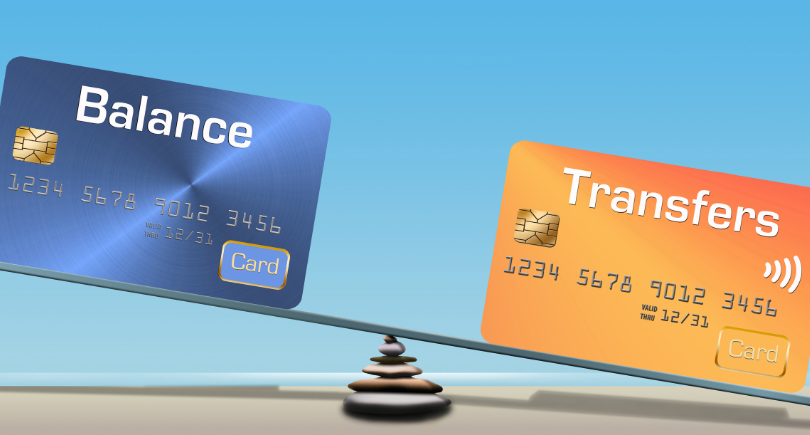

Why you should trust CardRatings.com
At CardRatings.com we discuss the most up-to-date news and trends within the credit card space. Since we first pioneered the concept of online credit card reviews in 1998, our team of financial experts has provided comprehensive and unbiased credit card reviews for more than 175 cards, plus hundreds of additional resource articles to help educate everyday cardholders so they can feel more confident about their card choices. All our content is written and reviewed by industry experts. Though our content may occasionally contain references to products from our partners, we maintain strict editorial integrity and advertiser relationships and compensation never influences ratings, reviews or featured products. The difference between editorial content and advertising must always be clearly stated. Learn more.
A credit card balance transfer can be a lifeline in times of financial crisis or during an emergency. Having extra time to pay off an unexpected bill without racking up interest expenses can mean the difference between a short-term headache and long-term financial heart ache.
That said, used strategically, balance transfer credit card offers can also provide financial freedom in non-emergency situations and protect you, at least in the near term, from fluctuating interest rates. Maybe you don’t need a balance transfer at the moment, but taking advantage of one could allow you space and cash flow to achieve a goal or responsibly satisfy a want.
Let’s take a look at the some rules for using a balance transfer to your advantage
Only use the card for your balance transfer
Not every card with a 0% balance transfer offer also extends that introductory rate to purchases, so you don’t want to add purchases to your pay off balance when they may not have that same 0% rate.
Additionally, though, if you’re doing a balance transfer to stretch your dollar interest-free, your primary goal with that card needs to be paying off the balance transfer — not adding additional expenses to the card.
For simplicity’s sake, reserve that balance transfer card for your balance transfer only until you’ve fully paid it off.
Consider all the options
A balance transfer credit card could mean doing that home remodel you’ve been wanting to do without taking out a pricy personal or home equity loan. With interest rates on the rise (or at least staying elevated) for the foreseeable future, locking in a 0% APR via a balance transfer could mean the difference in hundreds of dollars in interest.
➤ LEARN MORE:How does the Federal Reserve impact credit card interest?
But it never hurts to understand your options. Talk to your banker about personal loans or home equity opportunities and honestly consider how long it will take you to pay off the debt you want to transfer.
Score some credit card rewards
A balance transfer won’t earn you any credit card rewards; however, the original purchase certainly can.
If you know you’re going to transfer the balance anyway, strategically choose the card on which to make your purchase so that you can earn maximum rewards.
Don’t forget the balance transfer fee
Once upon a time, there were numerous balance transfer card offers out there that didn’t even charge a transfer fee. While there are still a handful of no-fee offers available — mostly with smaller credit unions and only for people with pristine credit — those days of no-fee transfers are mostly a thing of the past.
You should expect, and budget, for a 3%-5% balance transfer fee when you’re making your plans. Consider it part of the cost of doing business. Assuming you’re taking advantage of a lengthy 0% offer and will fully pay off your debt before the transfer period ends, you’re likely to still come out well ahead, even with the fee.
Still, don’t forget to account for it.
Pay well more than the minimum due
The goal with a balance transfer is to give yourself some interest-free breathing room to pay off existing credit card debt, whether that’s debt you took on intentionally or debt thrust upon you in a crisis.
To fully realize the benefits of a balance transfer offer, you must pay off the debt before the 0% period ends and that will necessarily require paying more than the minimum amount due. The bank will only require you to pay a tiny fraction of your existing balance in a given payment cycle, but paying only that will not clear your debt within the 0% period. It simply isn’t enough.
Instead, look at your entire monthly budget and decide how much you can pay toward the debt each month; it should be enough to fully clear the debt before the balance transfer period ends.
Understand how balance transfers affect your credit
You can use a zero-APR balance transfer card to potentially raise your FICO credit score. That’s because opening a new credit account bestows upon you more available credit.
Thirty percent of your FICO score is based on how much you’ve charged as a percentage of how much credit is available, or your credit utilization rate.
Lynnette Khalfani-Cox, personal finance expert and founder of the free financial advice blog AskTheMoneyCoach.com offers this real-world example:
- Let’s say you have a credit card with a credit limit of $10,000.
- If you run up a balance of $5,000 on this card, your credit utilization rate would be 50%.
- Now someone comes along to offer you a balance transfer deal on a new card with a $5,000 credit limit, giving you a total credit limit of $15,000.
- You transfer $2,500 of the balance on the old card to the new card.
- Now each card has a balance of $2,500. You still have the same total amount of debt ($5,000), but because your total credit limit is now $15,000, your credit utilization rate drops to 33% from 50%.
“You’ve knocked down your credit utilization rate, which is nearly one-third of your credit score, and in so doing very likely improved your credit score,” she says. “Now, what can you do with your higher score? If you’re in the market for a mortgage, and your score just climbed by 20 points, you now likely qualify for a mortgage with a lower mortgage rate, saving thousands of dollars over 30 years.”
Balance transfer offers are tools, not emergency funds
In an ideal world, you’d never have a financial crisis or, if you do, there’s plenty of money in an emergency fund to cover it. Certainly, we don’t live in an ideal world and you may need to someday use a balance transfer offer to help make ends meet.
Do your best to use balance transfer offers when they benefit you and because you want to, not because you have to.
Whatever your circumstances, choose the best balance transfer card for your lifestyle and needs and tackle your debt with commitment and a real plan to paying it off.


